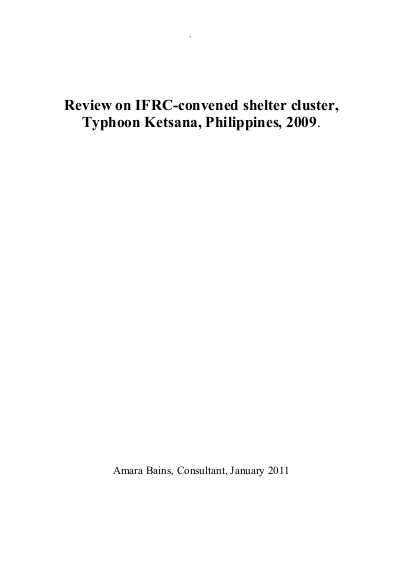
At the end of September, 2009, The Philippines was hit by typhoon Ketsana resulting in considerable damage and displacement of many people. Metro Manila was hardest hit, due to the large numbers of informal settlers living in highly vulnerable areas. While this was the second time the shelter cluster had been activated in the Philippines, it was the first time that it operated in parallel to a national cluster system managed by the government. The IFRC-led the shelter cluster for a period of three months, with initial contact with UN-Habitat regarding handover, occurring during the 14 days the first coordinator was in the field. After a series of unsuccessful bids to take over the shelter cluster by both UN-Habitat early on and International Organization for Migration in the latter stages, UN- Habitat finally, following negotiations in Geneva, took over the shelter cluster.
This review seeks to appraise the service provided by the IFRC as shelter cluster lead as well as provide recommendations to the IFRC on shelter cluster coordination.